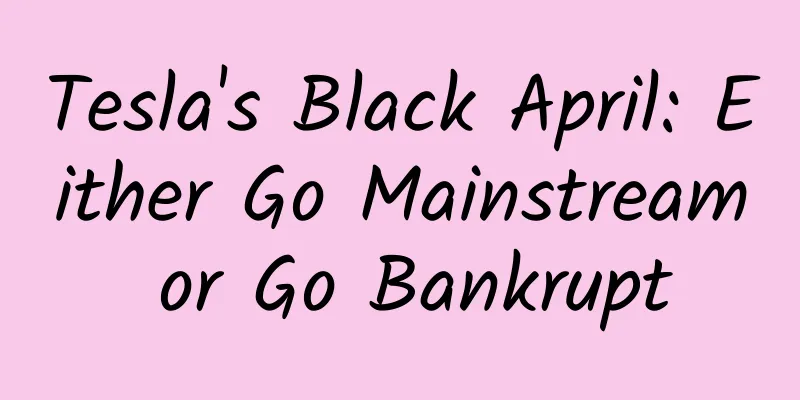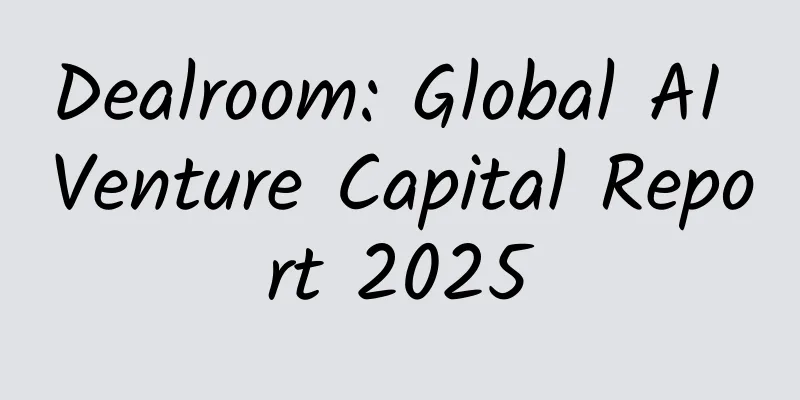Tesla's Black April: Either Go Mainstream or Go Bankrupt

|
"Tesla is bankrupt!" Tesla founder Elon Musk seriously joked about himself on his Twitter page, and attached a photo of himself wandering the street holding a bankruptcy cardboard. This was Musk's self-deprecating joke on April Fool's Day this year, and also a counterattack against the short-selling forces on Wall Street. Jim Chanos, the big short who became famous for shorting Enron, listed many reasons for shorting Tesla and called its stock "worthless." John Thompson, chief investment officer of Vilas, is one of the few hedge fund managers on Wall Street who has consistently outperformed the market. He believes that "Tesla will go bankrupt in the next 3-6 months." In its report in early April, Goldman Sachs once again took a short view on Tesla and cut the price by 36% from the current share price. Wall Street does have enough reasons to short Tesla: production hell, declining orders, and Moody's bond rating downgrade. Worse than poor management, Thompson also questioned Tesla's suspected financial fraud, based on 85 investigation letters from the SEC and the resignation of two financial personnel. All of this is ultimately attributed to Tesla's negative cash flow. Thompson believes that Tesla needs to raise $8 billion in the next 18 months. In the past month, Tesla has encountered new troubles almost every few days. The stock price has fallen from a peak of $345 to $257, and the market value has shrunk by as much as 25%, far exceeding Facebook, which is at the center of the public opinion vortex. On March 28, Tesla was involved in a serious car accident, and federal safety personnel investigated its autopilot system; on March 30, due to the hidden danger of failure of the steering wheel power system in cold environments, Tesla announced the recall of 123,000 vehicles. This was the largest recall accident in its history; in early April, Tesla’s stock price plummeted at the beginning of the month after being questioned and shorted by Wall Street. At a time when Tesla was facing the dual dilemma of production capacity and autonomous driving, Musk started sleeping in the factory again, and put Doug Field, the vice president in charge of Model 3 mass production, on the shelf; on April 11, the Fremont factory stopped production; on April 16, the US government began investigating the factory worker injuries; on April 25, Jim Keller, head of autonomous driving, also announced that he would leave Tesla and join Intel. In the 15 years since Tesla was founded, lack of money, lack of people, and struggling on the brink of bankruptcy have become the norm in Musk's entrepreneurial career. Tesla has always been at the top of the short-selling list. In an interview, he said that these short-selling forces are "very hurtful." But every time, Tesla survived in desperate situations. "Tesla will either live or die this year!" This is the unanimous conclusion of car companies after analyzing Tesla's cash flow at a gathering of the automotive industry. The ramp-up of Model 3 production capacity will be the most critical battle since Tesla was founded. If Tesla breaks through the bottleneck of production capacity and cash flow crisis, it will become a mainstream car manufacturer; otherwise, what awaits Musk is real bankruptcy and reorganization. On the brink of bankruptcy Tesla is tightening all financial spending. "All project spending that will accumulate more than $1 million in expenses over the next 12 months should be suspended until my explicit approval is obtained," Musk wrote in an internal letter in mid-April. Qi Lei, managing partner of Emerge Venture, a family fund focusing on the Chinese and US auto industries, once did some calculations with people in the auto industry and predicted that Tesla's cash flow would dry up in August this year and enter bankruptcy reorganization. "All the people in the auto industry I have contacted are not optimistic about Tesla, but hedge funds hold the opposite attitude - as long as Musk can raise funds or re-issue bonds before bankruptcy, he will enter a safe zone," Qi Lei told Caijing. Internal letters show that Musk is strictly controlling costs at all stages: he asked the financial team to verify global project costs and cut all unreasonable expenses. In automobile production, contracting companies have to build relationships with each other, and they need to go through various links such as contractors, middlemen, and subcontractors, which means that many middle-level managers just do everything without creating value. He requires all managers to be familiar with the quotes of their suppliers, down to every component and even labor. Working for Musk has never been an easy job for both employees and suppliers. He requires all contractors to have clear detailed quotes and fulfillment timelines, and anyone who fails to meet Tesla's standards will be terminated next Monday. Under strict budget control, Tesla's factory has entered a devilish production rhythm - 7 days a week, 24 hours a day. In addition, the Fremont factory and Gigafactory will increase their staff by about 400 people per week. Many entrepreneurs have failed because of cash flow. The 2017 financial report shows that Tesla still had $3.5 billion in cash at the end of last year. Last year, it consumed about $1 billion in cash every quarter, mainly for large investments in the Model 3 production line. In the past nine quarters, Tesla has never been able to make a profit in a single quarter. The financial report shows that its total debt is $23 billion, and UBS said that $1.4 billion of the debt will mature at the end of 2018. Moody's bond believes that Tesla urgently needs to raise more than $2 billion. In addition to the Model 3 production line and the production plant that require continued large capital investment, the semi-trailer truck that was just released last year, the high-end sports sedan Model Y SUV, and the Chinese factory where the negotiation process is unclear are all Tesla's big money-burning projects. "If you look at it from the perspective of risk assessment and economic return, Space X and Tesla would be the worst projects. When I started building Tesla and Space X, I estimated the success rate to be no more than 10%," Musk once said publicly. This is not the first time Tesla has faced a financial crisis. Musk has been facing difficulties in funding, talent, and production since he started his business. The most difficult time happened on Christmas Day in 2008, when Musk had already closed the finance department and was ready to declare bankruptcy the next day. During the financial crisis, key events such as Daimler's investment, the transfer and orders of Toyota's Fremont plant helped this new electric car company to transition to a safe zone. By the end of the second quarter of this year, whether the weekly production of Model 3 can reach 5,000 units will become the turning point of Tesla's cash flow crisis. If the base price of Model 3 is $35,000 per unit, plus some optional features, the average price per car is more than $40,000, if the production capacity bottleneck can be broken, this will create nearly 1 billion in monthly cash flow for Tesla. Capacity Hell "There are two things that keep me awake at night. One is that artificial intelligence will destroy the world, and the other is the production capacity hell of Model 3," Musk said. The last time he appeared in public was in an interview with CBS, and he looked haggard because he didn't sleep well. In order to increase the production capacity of Model 3, Musk once again moved his bedroom to the Fremont factory. In a small office in the corner of the factory, there is a simple whiteboard and a few tables and chairs. He took the initiative to show the single sofa where he sleeps every day. It is a long and thin sofa with wide cushions but it is difficult for an adult to lie down. "There are definitely fewer problems with Model 3 now than when we had Model X. At that time, it was also difficult to mass produce. Musk slept in the factory for a month and checked every link as soon as it came out." Chen Peng, a former Tesla employee, told Caixin. Musk himself did not forget to joke that the last time he slept in the factory, the sofa was too small, so he had to sleep on the floor. The LCD screen in the factory shows the production status of each part. "I can see the whiteboard in real time, where there is a problem, and then check it in real time." Musk explained why he lives in the factory. He participates in all aspects of supervision and solves problems encountered in production as quickly as possible. When asked about the production capacity of Model 3 this week, he almost blurted out "2071". Model 3's production capacity difficulties and Musk's delays are no longer news. At the Model 3 new product launch in July last year, Musk announced that its weekly production would reach 5,000 vehicles by the end of 2017, but the total number in the fourth quarter of last year was only 2,500. Later, he said that the weekly production could be increased to 2,500 vehicles in the first quarter of this year. After the end of the first quarter, the weekly production was only around 1,400 vehicles. With Musk sleeping in the factory for several days to test the pressure, Tesla's production has experienced a qualitative improvement. "Tesla's weekly production has exceeded 2,000 vehicles!" Although the weekly production did not reach the 2,500 vehicles that should have been achieved after the delay, as soon as Musk announced the news, the stock price rose by more than 6% before the market opened. A few weeks later, he confidently wrote in an internal email that the production would reach 6,000 vehicles per week by the end of the second quarter. Interestingly, despite repeatedly breaking his promises and even being sued by consumers for false advertising of production capacity issues, Musk's personality of publishing almost all progress online has also won him the favor of some people. When Musk inadvertently "showed off" his factory sofa, netizens spontaneously raised funds for him to build a new sofa. In one day, 400 people quickly raised $5,000, completing the original goal of $1,000. Within a few days after the good news was announced, the production line at the Fremont factory was closed "once again" and stopped for 4-5 days without any warning; an official spokesperson responded that the factory was shut down in order to improve automation and systematically solve production bottlenecks. "Humans are underestimated," Musk wrote on Twitter on April 13. He believes that Tesla's excessive automation is a mistake. He wanted to use all new technologies in the production of Model 3 at once, but it turned out that it needed to be done step by step. When Qi Lei visited the Tesla factory, she found that the damage rate was particularly high, with damaged door panels piled up everywhere in the factory. This statement was also confirmed by a Tesla employee. In Tesla's battery production, 100 sets of batteries are manually assembled, and usually only 80 sets are qualified. Those unqualified parts are discarded, while the defective rate of old car manufacturers is only controlled within 1%. "It takes traditional car factories decades to build a production line. Normally, it takes more than six months to design each model and calibrate the production line machines," said Qi Lei. In established car companies, 90% of production is automated, with only some parts and quality inspections done manually. Today, many parts of Tesla are still assembled manually. Since many Model 3 parts are still manually debugged, every Tesla produced now is slightly different. "The biggest bottleneck of Tesla's production capacity is that production cannot keep up with design." Tesla employees revealed. Usually when designing a car, after the design is completed, the factory will confirm whether it can be produced. However, Tesla's internal pace is very fast and the pace of work is rushed, so the factory has not confirmed it. This has led to the need for manual modification in many links, especially in the battery packaging. In addition to the production line assembly process affecting production capacity, another major cause of production capacity anxiety is the battery problem. In the production of the new Model 3, the previous 18650 battery was replaced with a 21700 battery. The new battery has a higher energy density and better performance than before. But the challenge is that since the Model 3 is narrower and smaller than the Model S in design, a narrower battery packaging technology is required. Many packaging modifications are still using manual packaging because the production line has not been deployed in time. The problem is a high defective rate and low production efficiency. A battery supplier who has visited Tesla's factory said that many of Tesla's production lines have already used robots, and there are many innovations in the design process and the use of materials and processes. However, factory workers work 12 hours a day. This person who is very familiar with factory management believes that Tesla has too many problems in management and culture. According to US media Reveal, Tesla employs more than 10,000 employees at its Fremont factory, some of whom have been cut by machines, accidentally crushed by forklifts, or burned by splashing molten metal. On April 18, the California Department of Occupational Safety and Health began an investigation into the injuries of Tesla factory workers. All these problems are closely related to Musk's personality. He works 100 hours a week and has always been creating impossible things. Whenever he encounters difficulties, he personally takes charge and applies this high-pressure policy that pushes himself to the limit to his employees, which is also reflected in many aspects of car design and production. Accidents continue On March 23, a Tesla crashed into a highway guardrail on the 101 Freeway, the busiest highway in Silicon Valley. The front half of the car was smashed beyond recognition, and the owner was rushed to the hospital for treatment, but unfortunately died. The five-hour firefighting and the horrific Tesla abandoned vehicle made the accident widely known. The investigation report shows that the vehicle was in Autopilot mode at the time of the accident. This accident once again caused Tesla's autopilot to be accused of disregarding human life. Like all previous autopilot accidents, in this accident, the owner still took his hands off the steering wheel 5 seconds before the accident and ignored the system's warning. To be precise, Tesla's AutoPilot is an assisted driving function, and your hands cannot be off the steering wheel for too long. This is a different level of autonomous driving from the fully driverless car developed by Google. The sense of technology and the cool appearance are both Tesla's major selling points, and autonomous driving has also become a major gimmick for many early adopters to choose Tesla. However, this also forces the autonomous driving department to frequently update and upgrade, which has become a new selling point for each new product release. In addition to the departure of Jim Keller, head of autonomous driving who is responsible for AI chip development, an investor close to Tesla revealed that the AutoPilot department is the busiest department with the highest turnover rate within Tesla. "Many internal employees report directly to Musk, and he keeps a close eye on this area," said an investor close to Tesla's autonomous driving department. In Silicon Valley, Tesla is known for its high-intensity work, but its income is lower than the industry average. Because Tesla's autonomous driving department has practical experience, Tesla's employees are particularly sought-after when the major autonomous driving camps in Silicon Valley are emerging. While Tesla's entire company is strictly controlling its budget, salaries in the AutoPilot department have increased to the Silicon Valley average due to high employee turnover. Core Secrets Just as everything in Tesla's management culture revolves around Musk, Musk's control is also reflected in the fact that all links are developed by himself and the operation model is asset-heavy. If Tesla is willing to outsource core projects such as battery assembly, chassis, and body, it may not face the current production capacity bottleneck, but it will not become a real "car factory" with production lines after experiencing the crisis. Most new energy vehicle companies, except BYD, only develop one or several key links such as the "three electrics", and outsource the rest to suppliers. This asset-light model only requires cooperation with suppliers to combine the various parts of the car. It can save costs and control cash flow, but it is difficult to control product quality and price, and is greatly affected by partners. In 2013, there was a wave of closures of electric vehicles. Vogo and Coda, which were founded around the same time as Tesla, went bankrupt due to funding and mass production issues. The biggest difference between Tesla and other electric vehicles is that it adopts a heavy asset model and invests heavily in production and research and development: it ties battery technology to Panasonic's interests and assembles it itself; it also develops its own motors and electronic controls, and produces all first-level components by itself. It is also the first car manufacturer to launch self-developed assisted driving functions. "If traditional manufacturers were to make electric cars, Tesla's battery management technology would be ten years ahead of the old car manufacturers. It has accumulated a large amount of data to analyze battery loss." An employee told Caixin, "It also has world-leading motor technology. A good motor can increase battery utilization efficiency by about 10%." Tesla is a fully self-operated company that assembles all its core first-tier components. This asset-heavy model requires a huge amount of capital. The closed business model has saved Tesla from death many times in crises. Musk bought the former Toyota factory for $40 million. Since it produces and assembles all first-tier components, it later took over Toyota's $50 million parts production, which not only saved cash flow but also accumulated practical experience. But this model also brings problems. With the rise of new energy vehicles, mainstream power batteries are mainly soft-pack and square, which are better electric vehicle battery solutions than round batteries. Tesla used Panasonic round batteries in the early days, and all its experience is in cylindrical batteries, so it can only form a mutually dependent interest bond with Panasonic. "Tesla is now able to complete the production process of a car in two years, fundamentally because it is small, so the decision-making is flat and the execution is fast." Qi Lei believes, "When Tesla moved from a small manufacturer to a large manufacturer, many things were not as simple as they are now." Many people interviewed by Caixin believe that the management of Tesla is almost entirely based on Musk's personal will. He made Tesla successful. At the same time, the most dangerous thing about this company is not just its cash flow and production capacity, but that "as long as Musk leaves, the company will collapse." As a winner of Toutiao's Qingyun Plan and Baijiahao's Bai+ Plan, the 2019 Baidu Digital Author of the Year, the Baijiahao's Most Popular Author in the Technology Field, the 2019 Sogou Technology and Culture Author, and the 2021 Baijiahao Quarterly Influential Creator, he has won many awards, including the 2013 Sohu Best Industry Media Person, the 2015 China New Media Entrepreneurship Competition Beijing Third Place, the 2015 Guangmang Experience Award, the 2015 China New Media Entrepreneurship Competition Finals Third Place, and the 2018 Baidu Dynamic Annual Powerful Celebrity. |
<<: "Smarter Companionship" GAC New Energy's Intelligent Technology Leads the Beijing Auto Show
>>: The TV industry has begun to harvest bubbles. Is Internet TV ready?
Recommend
Lin Yu's Thinking Course quickly captures the blue ocean of paid knowledge topics and creates courses to seize the initiative
Lin Yu Little Bookboy Thinking Course, quickly cap...
"Super Microscope" - China Spallation Neutron Source
Produced by: Science Popularization China Author:...
International Epilepsy Awareness Day | Answer the "four questions" and protect the "little angels with electricity" together
June 28 International Epilepsy Awareness Day Epil...
Cute bear is coming! Do you know the world's smallest "little sun"?
In the vast natural world, there is a kind of bea...
The first "Metaverse" scam was exposed, claiming to have increased 18 times in 40 days, and many people have been fooled
The concept of "Metaverse" has inexplic...
How much does it cost to customize the Shihezi points mini program? What is the price quote for customizing Shihezi points app?
The factors affecting the quotation of Shihezi po...
iOS9 UI Tests Exploration Notes
What are UI Tests? UI Tests is a Testing componen...
Architecture design based on dynamic routing on mobile terminals
I haven't written an article for a long time....
APP promotion: 95% of people use these 5 conversion strategies incorrectly
The conversion rate optimization strategy is inef...
Many manufacturers are working on multi-core, multi-mode and multi-frequency: Qualcomm is in danger
After the opening of 4G, with the advancement of C...
International Vegetarian Day丨Is it good to be a long-term vegetarian? Eating this way will make you healthier!
Some people believe that being a vegetarian can h...
Alipay is in big trouble! Huabei and Jiebei will be disconnected, and Yu'ebao will also be affected
[[396720]] Since Ant Group's IPO was suspende...
What does the last column of the nutrition facts table mean?
Nowadays, many people are very familiar with chec...
The latest news on the Changsha epidemic in 2022: What are the specific closed areas today? Attached is the list of gated communities!
Today, the Changsha epidemic suddenly became a ho...
As iPhone screens get bigger, how can we design handheld products to be more user-friendly?
With the end of the first wave of Android flagship...









